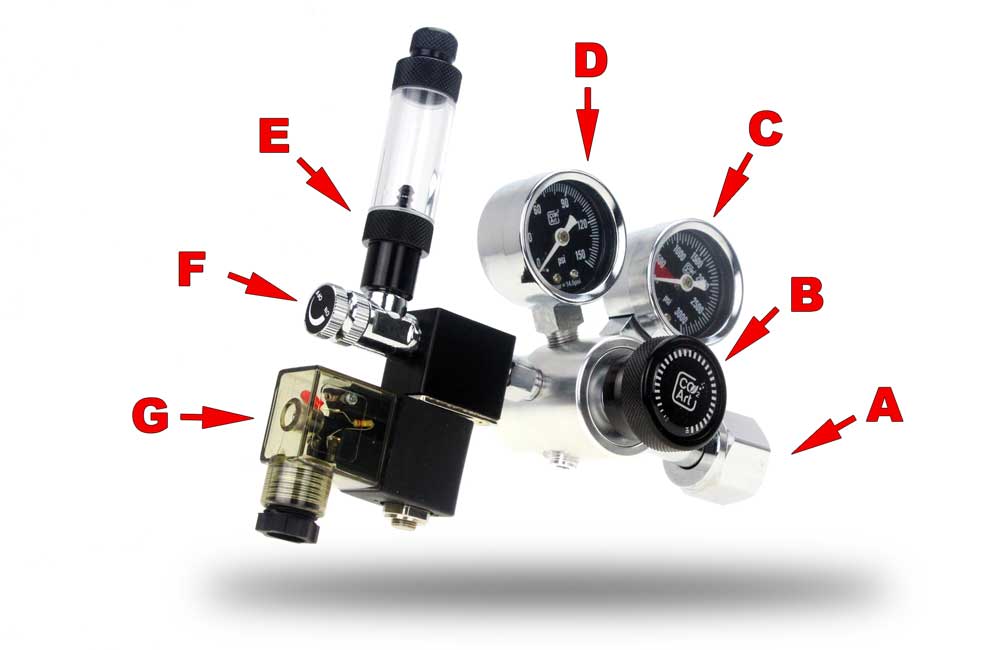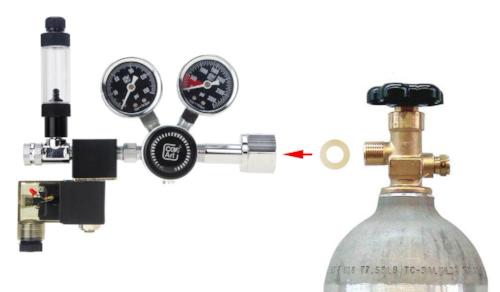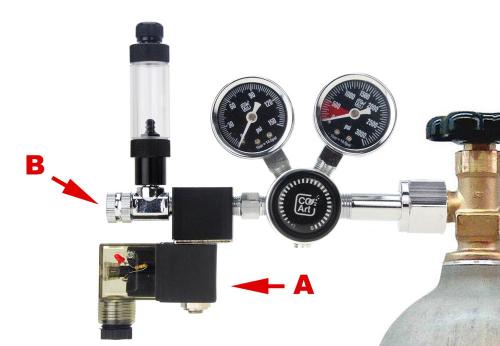Pro-SE Series Regulator at a Glance

A - CO2 cylinder connection nut
B - Working pressure adjustment knob
C - High pressure / CO2 cylinder pressure gauge (displays the amount of CO2 in your cylinder). Please note, for most of the time pressure will be at level of 700-900PSI as CO2 is in liquid state. When gauge will start to drop, that means liquid gas has evaporated and you have from couple hours to couple of days left to change the cylinder (depending on your bubble rate).
D - Low pressure / working pressure gauge
E - Bubble counter with integrated check valve
F - Gas flow (bubble rate) adjustments precision needle valve
G - Solenoid valve compatible with most pH controllers and electric timers
Step 1 | Washer Installation

Place washer between CO2 cylinder outlet and regulator's stem (inside regulator's nut)
Step 2 | Tighten the regulator

Tighten the regulator to your CO2 cylinder using a spanner or wrench
Step 3 | Bubble counter installation

A - Remove top cap and fill bubble counter with water*
B - Feed tubing through the collar and install cap back onto the bubble counter (detailed bubble counter tutorial)
*We do not recommend mineral oil as it may contaminate your diffuser.
Step 4 | Pressurising the regulator

A - Open main CO2 cylinder valve
B - Adjust working pressure to desire level* by turning front knob clockwise
1 - Reactors 10-20PSI*
2 - Ceramic and Basic diffusers 20-30PSI*
3 - High pressure atomizers (inline & bazooka) 30-40PSI*
2 - Ceramic and Basic diffusers 20-30PSI*
3 - High pressure atomizers (inline & bazooka) 30-40PSI*
Step 5 | Fine tuning bubble rate

A - Plug the solenoid into a power outlet socket
B - Start turning the needle valve anticlockwise to achieve the desired bubble rate.
Please allow 5-30seconds for pressure to stabilise between adjustments.
Monitor your bubble rate for the first two days and fine tune to achieve desire flow.
Do not adjust the flow right after solenoid is powered up. Please wait at least 30minutes before further adjustments.
After each regulator installation, follow steps from below video to make sure your system is leak-proof.
